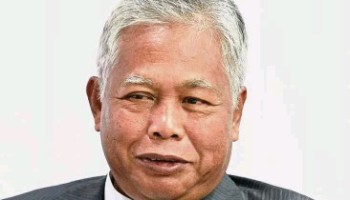`
KUALA LUMPUR: The JaminKerja Keluarga Malaysia initiative will support the government’s goal of reducing the unemployment rate by providing 600,000 job opportunities this year, says the Prime Minister.
`
Datuk Seri Ismail Sabri Yaakob said these would be provided via an allocation of RM4.8bil, which is a key thrust under Budget 2022 on job creation.
`
“The JaminKerja Keluarga Malaysia initiative is the manifestation of the government’s commitment to providing more employment opportunities and more sustainable economic development to drive the country’s recovery efforts in a structured manner and to contribute towards strengthening the national labour market.
`
“Malaysia is on the right track in its economic recovery efforts through the creation of more employment opportunities to fulfil the needs of the labour market,” he said at the launch of the JaminKerja Keluarga Malaysia initiative themed “Keluarga Malaysia, Makmur Sejahtera” and JaminKerja Keluarga Malaysia Career Carnival 2022 at the KL Convention Centre here yesterday.
`
The JaminKerja Keluarga Malaysia (Malaysian Family Job Guarantee) initiative is a collaboration between the Finance Ministry, Economic Implementation and National Strategic Coordination Agency, Human Resources Ministry, Social Security Organisation (Socso) and Human Resource Development Corporation (HRD Corp).
`
Also present at the launch were Finance Minister Tengku Datuk Seri Zafrul Tengku Abdul Aziz and Human Resources Minister Datuk Seri M. Saravanan.
`
The initiative consists of three main programmes, the first of which is the JaminKerja Employment Initiative that will be implemented by Socso with a target of providing about 300,000 job opportunities.
`
The second is the Malaysia Short-Term Employment Programme (MySTEP) that will offer 80,000 job opportunities in the public sector, government-linked companies and strategic partners.
`
The third is the Upskill Malaysia programme implemented by HRD Corp to provide practical skills training for job seekers to improve their marketability and provide guaranteed job placements.
`
About 220,000 trainees will be targeted.
`
Ismail Sabri said the JaminKerja Employment Initiative will also focus on efforts to encourage employers to hire especially individuals who were not actively working such as the unemployed, and vulnerable groups consisting of the disabled, former prisoners, the elderly and women who were unemployed for a long time.
`
“This is to ensure that no group is left out,” he added.
`
Ismail Sabri said once employers are given the incentive to hire, job seekers could use the MyFutureJobs platform to get job matches and fill the vacancies that are offered, adding that incentives will be given to employers who employ locals to fill jobs that used to be filled by foreign workers or expatriates.
`
The government, he said, is committed to helping the entrepreneurial community, which hires and creates job opportunities, so that they could continue to grow and rebuild their business through the Semarak Niaga initiative worth RM40bil.
`
The Prime Minister added that the Human Resources Ministry, too, has planned 312 open interview programmes and employment carnivals throughout the year.
`
“The JaminKerja Keluarga Malaysia Career Carnival is the curtain-raiser for 2022 and is the first to be organised in the country, offering more than 12,000 job opportunities from 50 employers from various industries,” he said.
`
To reduce the skills mismatch gap, Ismail Sabri urged the industry to implement better recruitment strategies by taking into account social changes including a more flexible work environment.
`
“As the National Employment Council (NEC) chairman, I am confident that the efforts of the NEC in enhancing the momentum of job creation as well as boosting the job market will be able to continue through the JaminKerja Keluarga Malaysia initiative, which in turn will also strengthen the Malaysian Family household income, especially underprivileged groups, and the B40 and M40,” he said.
Source link
Related posts:
Arrest decline in productivity and competitiveness in Malaysia




















